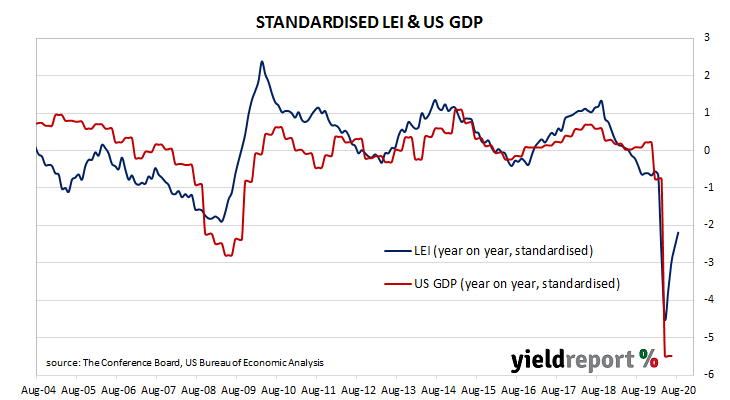Summary: US leading index increases for fourth consecutive month; increase slightly less than expected; July increase revised up; index remains in recession territory, downside risks present; “substantially weakened economic conditions” at start of 2021.
The Conference Board Leading Economic Index (LEI) is a composite index composed of ten sub-indices which are thought to be sensitive to changes in the US economy. The Conference Board describes it as an index which attempts to signal growth peaks and troughs; turning points in the index have historically occurred prior to changes in aggregate economic activity. Readings from March and April signalled “a deep US recession” but more recent readings indicate the worst has passed.
The latest reading of the LEI indicates it rose by 1.2% in August. The result was slightly less than the 1.3% increase which had been generally expected and noticeably less than July’s 2.0% after it was revised up from 1.4%. On an annual basis, the LEI growth rate increased from July’s revised figure of -6.6% to -5.3%.
“Despite the improvement, the LEI remains in recession territory, still 4.7 percent below its February level. Weakening in new orders for capital goods, residential construction, consumers’ outlook and financial conditions point to increasing downside risks to the economic recovery,” said Ataman Ozyildirim, Senior Director of Economic Research at The Conference Board.
Changes over time can be large but once they are standardised, a clearer relationship with GDP emerges. The latest reading implies a year-on-year growth rate of -1.3% in November.

